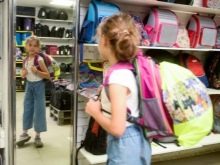How does a satchel differ from a backpack and a briefcase?

To understand the difference between a knapsack and a backpack and a portfolio, many parents want to collect their children for school. While these accessories have common functions, there are significant differences that directly affect the ease of use, ways of carrying, recommendations for use. A detailed overview will help you understand the differences between school bags and backpacks and briefcases.
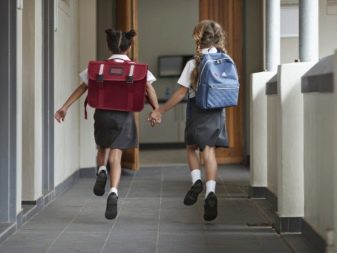
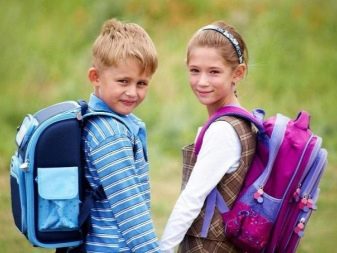
External differences
The schoolbag, briefcase and rucksack are used by children to carry the necessary educational supplies. Functionally, they are quite similar, but there is still a difference between these types of bags. And it is significant, because it is the external differences that most often determine for a child of what age a particular accessory is suitable.
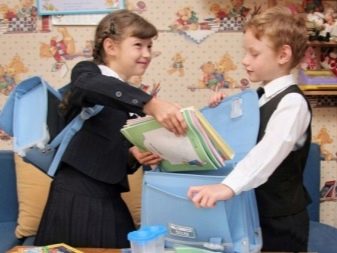
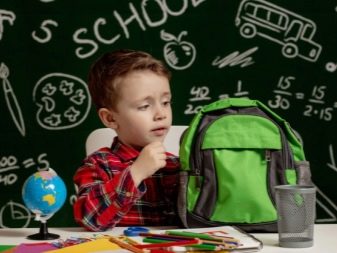
Briefcase
Today, this type of bag can be found only in the arsenal of high school students trying on a business style. The portfolio managed to become an attribute of businessmen, but literally 25 years ago it was practically an uncontested solution for any schoolchild.
There are a number of distinctive characteristics of this type of accessories.
- Bag-like construction with fold-over front flap. This cut allows you to protect your content from getting wet and other external threats.
- Leather or leatherette, PVC structure... Waterproof material is one of the main distinguishing features of the portfolio.
- Handle holder. School bags additionally have shoulder straps. Most often they have a detachable design with snap hooks.
- Metal clasps and fittings... These elements provide reliability, much more resistant to wear and tear than plastic counterparts.
Today the portfolio can no longer compete on an equal footing with more modern satchels and backpacks.In addition, carrying a school bag in your hand is not very conducive to maintaining a healthy posture.
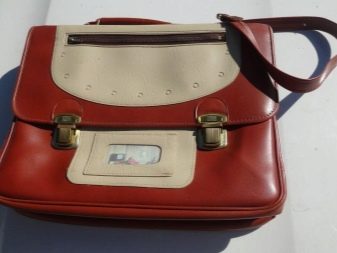
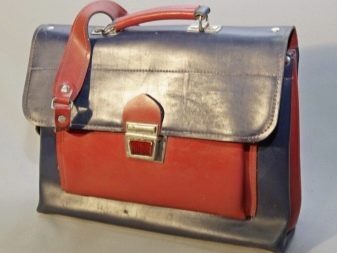


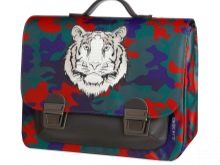
Backpack
This type of accessories does not have a rigid frame, it is made of durable textiles with moisture-proof impregnation. For the manufacture of school backpacks, non-marking fabrics are used that can withstand significant breaking loads.
Distinctive features of backpacks.
- Different widths of straps... If the portfolio does not have them at all, and the knapsack has this element equipped with wide overlays, the choice of options for backpacks is much wider. There are models with 1 or 2 cross over clamps. The straps of the backpack can be narrow or wide depending on individual preferences.
- Variety of choice of materials. Backpacks are made of natural and artificial leather, velor, special tourist textiles such as "Oxford" or other durable fabrics. You can find an option that will appeal to even an obstinate teenager.
- Lack of a rigid frame... The backpack is soft, its shape is maintained while filling. Such a school bag has no orthopedic properties.
- Multiple pockets and compartments... The design of the backpack allows you to change its configuration. This is convenient if you have to adapt the accessory for sports, educational or creative activities of the child.
Backpacks are an intermediate link in the evolutionary development of school bags. They are suitable for middle and high school students with no orthopedic problems.
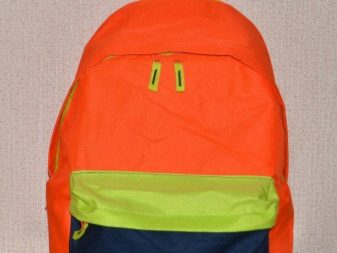
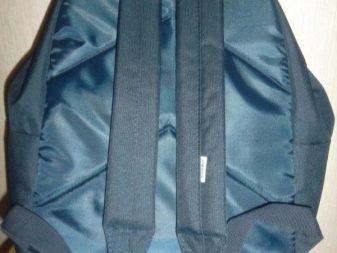
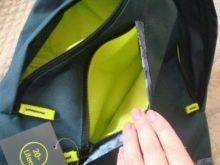
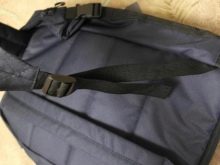
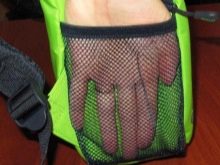
Knapsack
This format of school bags is considered the optimal solution for primary school students. Outwardly, the knapsack differs little from the backpack, but it has features that have to be taken into account.
- Hard case... The back, sidewalls, front part have a frame that allows the product to keep its shape, not allowing the contents to crumple or be exposed to other types of impact.
- Soft orthopedic inserts... They are present at the back of the backpack. These elements provide the necessary relief, help to achieve an orthopedic effect, and evenly distribute the load on the back and shoulders.
- Mesh elements... Such inserts are present on the back and shoulder straps of the backpack. They are necessary to remove excess heat, help the child not to sweat while carrying the backpack.
- Legs... This element provides good stability for the pack. In addition, it prevents the bottom of the backpack from getting dirty when it comes into contact with the floor or other surfaces.
- Hinged cover... It has a zipper or velcro fastener, a plastic carabiner. Provides easy access to content.
- Additional clamps. Usually they are presented with belts fastened at the waist of the child. This element provides a more correct fit of the back to the body and clothing of the child.
- Reflective details. On school bags, which are school supplies, they are always there. This is provided for by modern standards. Backpacks are not equipped with such an add-on in all cases.
- Vertical or horizontal orientation... The second option is chosen for children of small stature, for whom ordinary models turn out to be large.
It is worth considering that the satchels are precisely specialized school supplies. They have an orthopedic, anatomically correct design; when carrying, they do not overload the back and shoulders. It is these products that are recommended for use by schoolchildren studying in primary grades.
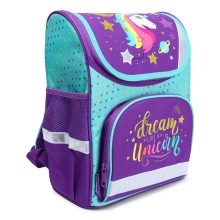
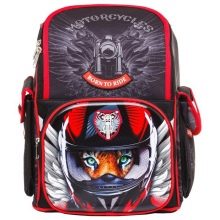

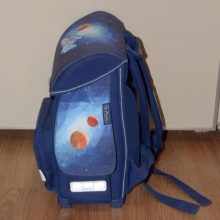

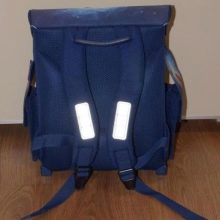
Comparison of characteristics
The external differences between backpacks, satchels and briefcases are obvious. But there is a difference in other parameters as well. According to their characteristics, these types of bags also differ markedly. By comparing their indicators, you can find certain points that are worth paying attention to.
- The weight... Of course, there are lightweight backpacks that fit into the 10% of the student's weight recommended by sanitary standards. But even they have a mass of 1 to 2.5 kg.The lightest textile backpacks are noticeably lighter, weighing 600-700 g, briefcases have approximately the same performance. This can be important when the interior is fully loaded with textbooks and other accessories.
- Volume... This indicator determines the capacity of the product. For knapsacks, it varies from 15 to 25 liters. For backpacks, these indicators are more modest. The briefcase can hold no more than 10 liters of content. You won't be able to put a change of shoes or a lunch box in it.
- Height and width. Briefcases are made in A4 format, 21x29.7 cm. Satchels have a back height of about 350 mm, a width of at least 210 mm. Backpacks are usually available in 45x25cm format.
- Organization of internal space... Backpacks usually have 1 compartment, with or without light partitions. Briefcases have 2 compartments. The backpack may not have partitions inside or be divided into compartments, includes additional pockets.
It is important to understand that the characteristics of the product largely depend on the age for which it is intended. The weight can also be influenced by the type of material and the number of fittings. Leather products are always heavier than textiles.

What is the best choice?
When choosing the right accessory for carrying school supplies on a daily basis, parents have to make a difficult choice between briefcases, backpacks and school bags. The decision becomes even more difficult as the child grows.
It is believed that orthopedic backpacks are required only for primary school students. But if you have problems with posture, you will have to wear them in middle or high school.
In addition, there are other points to consider.
- Carrying method. If a child goes to school accompanied by adults, travels by car, you can purchase any version of the bag for him. Short-term carrying of heavy weights in the hand or on one shoulder will not harm the posture. When going to school and home on your own every day, you should give preference to a comfortable backpack or knapsack with wide straps.
- Child's age. Younger schoolchildren should not buy regular backpacks. They will do more harm than good. In addition, the satchel is better protected from the consequences of children's activity at school. High school students prefer lightweight and comfortable accessories without a rigid frame.
- Filling... The backpacks usually have 2 side mesh pockets, 2-3 compartments inside, a large compartment with a zipper in the front. The backpack can have a more versatile design. Numerous pockets, valves allow you to conveniently place inside a variety of useful little things, including modern gadgets. The portfolio's capabilities are limited to 2-3 internal departments, it is focused on carrying papers and documents.
- Design... Here it is worth focusing on the interests of the child. The portfolio in the lower grades today looks archaic, and its appearance is rarely impressive. Among the models of knapsacks, you can find many proposals with bright prints, focused on the interests of children of different ages. School backpacks are presented in the widest variety of designs, you can choose a strict monochrome version or find a bright one, noticeable from afar.
All these criteria will help you find the right option for a bag for notebooks and other accessories for children of all ages - from first graders to those who have moved on to the senior level of education.


